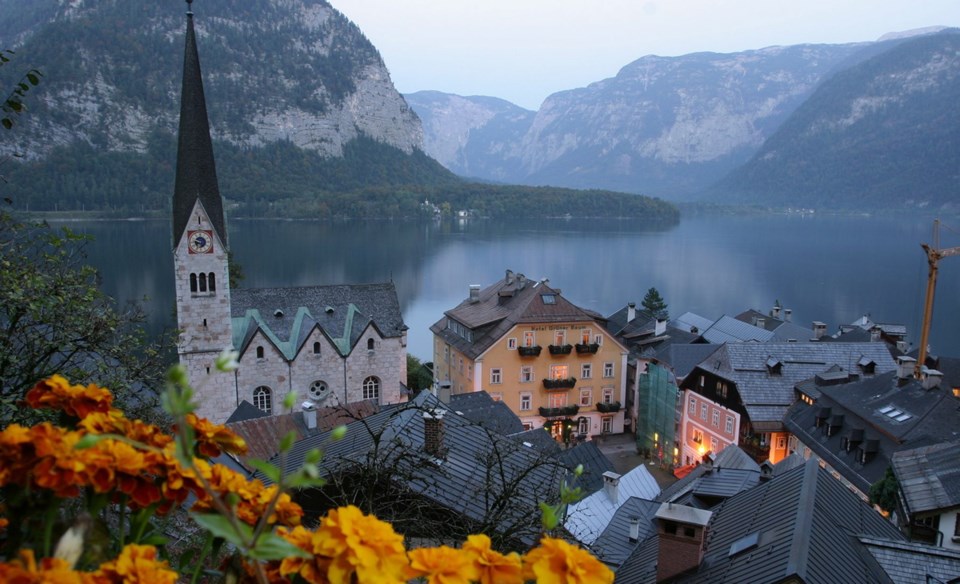A fundamental part of enjoying travel in Europe is finding places that I call тАЬback doors.тАЭ When I first started traveling, back doors to me were EuropeтАЩs undiscovered corners and untrampled towns that had, for various reasons, missed the modern parade (like Dingle, on IrelandтАЩs western edge, or PortugalтАЩs Salema, tucked away on the southern coast). But now, with more sophisticated travelers тАФ and more travelers overall тАФ worthwhile places rarely go undiscovered. And certain destinations that IтАЩve long raved about now suffer from congestion.
So how, in todayтАЩs Europe, do I still find back doors? These days, my approach is less about discovering the undiscovered and more about using thoughtful travel to get beyond tourist traps, sidestep crowds, broaden perspectives and experience a part of Europe that most travellers miss. Here are some ways you can still do that.
тАв Create a balanced itinerary. Many travelers go to crowded, touristy places тАФ then complain about the crowds. Take Salzburg. Rather than complain about all the people, I celebrate them while enjoying its elegant beauty, Mozart sights, and Sound of Music scenery тАж then get on a train and go two hours south to Hallstatt. This beautiful little village тАФ bullied onto a ledge between a towering mountain and a gorgeous lake тАФ doesnтАЩt have SalzburgтАЩs sightseeing, but it offers a break from the bustle, even with its recent surge of popularity (and since most of its visitors donтАЩt spend the night, itтАЩs all yours in the evening and early morning).
тАв Stay overnight. Many popular destinations have a tourist rush hour (generally, between the hours of 10 a.m. and 4 p.m.), when everybody floods in from nearby cities, cruise ships and tour buses. These day-trippers inundate the town, see the marquee attractions, do some shopping, then retreat to their home bases.
To enjoy these places without the crowds, spend the night. Even more than Hallstatt, the historic Spanish city of Toledo, on a high rocky perch just south of Madrid, is mobbed with day-trippers. But after they leave, locals push away the postcard racks and come out for their paseo тАФ and the real Toledo emerges. Touristy towns really come into their own late at night and early in the morning. If you play it right, itтАЩs just you, floodlit cobblestones and romantic ramparts.
тАв Find lesser-visited alternatives. Many travel dreams are created by the tourism industry, which tend to pump up the clich├йs of each country. For Germany, itтАЩs castles, beer and the Rhine River. This area, while pretty, also has lots of traffic, train noise, commercialism and bus tourism. But nearby, you can have a similar and quieter experience along the Mosel River. The misty Mosel is what some visitors hope the Rhine will be тАФ peaceful, sleepy, romantic villages slipped between steep vineyards and the river. My favourite town here is Beilstein, where you can sit at your guest house sipping wine produced right in the valley, gazing at views of the river and distant vineyards.
тАв Visit secondary sights. Many travellers focus only on the top sights, missing many worthwhile, less-known attractions. While every tourist in Paris descends on the Louvre and Orsay, places like the Rodin Museum, with a spectacular sculpture garden, or the Cluny Museum, with its mysterious тАЬLady and the UnicornтАЭ tapestries, are positively peaceful.
ItтАЩs also fun to seek out museums suited to your private little fancies. I love human bones, so in Rome, while everyone is at St. PeterтАЩs, I visit the Capuchin Crypt, with thousands of 18th-century bones stacked artistically. Similarly, if youтАЩre into the Beatles, Barbies, thimbles, shoes or chocolate, thereтАЩs a museum in Europe for you.
тАв See todayтАЩs Europe. I love EuropeтАЩs modern side, and thatтАЩs an angle many travelers miss. In big cities, itтАЩs worth leaving the old town to visit the bustling revamped business districts, such as LondonтАЩs Canary Wharf or ParisтАЩs La Defense.
Lately, IтАЩve been enjoying the less glamorous second cities тАФ the Chicagos of Europe тАФ such as Antwerp (Belgium), Marseille (France), Liverpool (England) and Hamburg (Germany). A lot of money and effort are being put into revitalizing these once-depressed, former Industrial Age powers, giving them a certain energy that you donтАЩt find in other cities. If you have three days in Edinburgh, spend one in ScotlandтАЩs second city: Glasgow.
тАв Join the locals. The best back doors are ones where you hang out with Europeans in their element. Visit the weekly market and buy fruit from the farmer. Attend an evensong service in England. Go to a sporting event тАФ soccer in Spain or hurling in Ireland.
Join the old retired French guys in a game of petanque. Or visit a Budapest thermal bath, slip into a too-tight bathing suit and challenge some big guy to a chess match.
╠¤
Rick Steves (ricksteves.com) writes European travel guidebooks and hosts travel shows on public television and public radio. Email him at [email protected] and follow his blog on Facebook.
